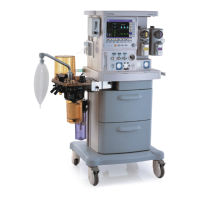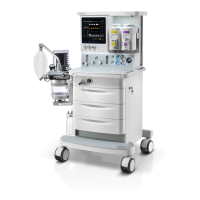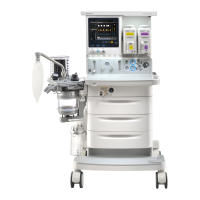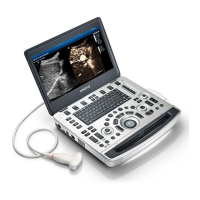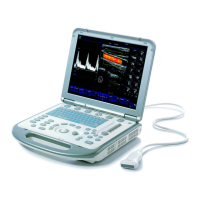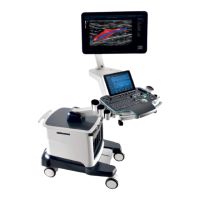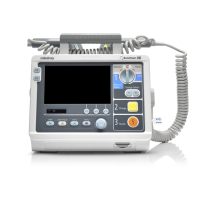7-41
5. The interface as shown in the following figure is displayed after the zeroing is complete.
Select [OK] to quit zeroing.
NOTE
If zeroing fails, other faults may occur on the machine. In this case , you need to
troubleshoot the machine.
7.3.4.3 Common Failures and Recommended Actions
If zeroing fails, troubleshoot the failure as follows:
1. Set the anesthesia machine to manual or standby mode. Shut down the fresh gas.
Remove the ventilator pipes to expose the inspiratory and expiratory openings to the
atmosphere. Discharge the remaining gas in the bellow. Ensure that no flow or pressure
is input into the flow or pressure sensor.
2. Check whether the zero point of the sensor is normal. For details, see section 3.7.3.
3. If the zero point of the sensor is incorrect, remove the sensor sampling line. Ensure that
the sampling line or the 3-way valve is not clogged. If the zero point remains incorrect,
the VCM may be faulty. In this case, replace the VCM.
4. If the zero point of the sensor is correct and zeroing failure persists, the 3-way valve
assembly may be faulty. In this case, replace the 3-way valve assembly.
7.3.5 EFCS Flowmeter Zeroing (User)
7.3.5.1 Zeroing Mechanisms
After the gas supply is disconnected, zero offset may occur in the sensor of the EFCS if the pointer
of the pressure gauge returns to zero but the EFCS still displays a non-zero flow value. You can
zero the flowmeter manually to immediately eliminate measurement deviations caused by zero
offset.
The zeroing principles of the EFCS flowmeter are described as follows: Close the proportional
valves in O2 limb and balance limb at the startup of zeroing. Close the two-way valve in O2 limb,
N2O three-way valve in balance limb, air three-way valve, and NO two-way valve of the standby
flowmeter. Read the actual flow values measured by the Sensirion flow sensors in O2 limb, in
balance gas limb, and in total limb and use the flow values as the zero values of the corresponding
flow sensors. Switch the valves to the EFCS state. Then, the zeroing ends.

